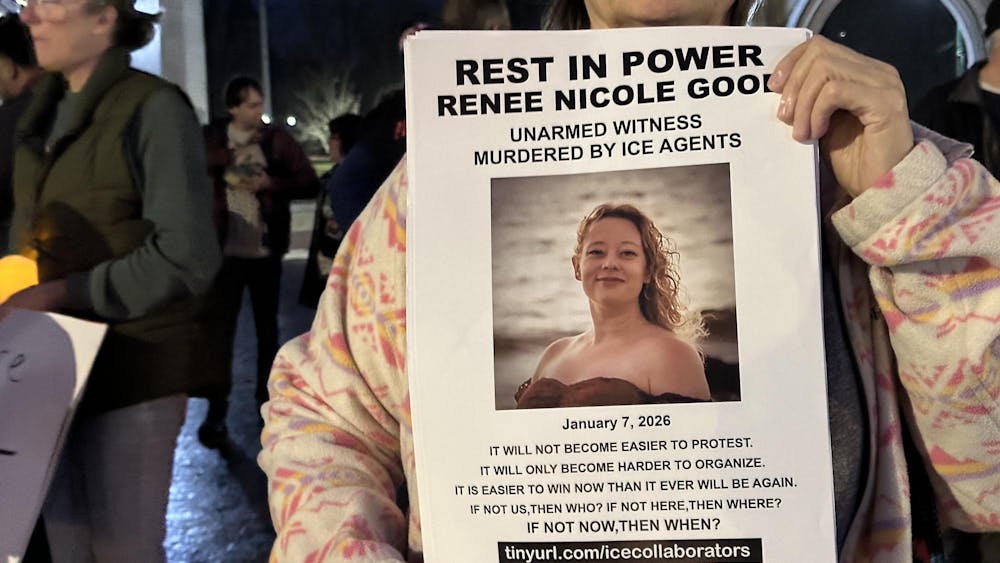On Monday, the Indiana General Assembly unveiled its two-year $22.7 billion budget, which would restore base funding for higher education for 2004 and increase funding by 1 percent for the 2005 budget year, despite Governor Frank O'Bannon's suggestions to flat-line education funding.\nIU Interim President Gerald L. Bepko said he is pleased with the plan, which restores $34.6 million in University base operating reductions, saying it shows positive support on the part of the General Assembly.\n"It actually has some good things in it," Bepko said. "It shows effort on the part of the members of the House to put a priority on education."\nWhile not relying on borrowing against future tobacco settlement funds to benefit needy college students, Democrats offered a warmer endorsement of "Energize Indiana," O'Bannon's 10-year, $1.25 billion economic development plan. The plan would allocate another $128 million in borrowing for five science buildings at IU, Purdue University and IU-Purdue University at Indianapolis, including funding the construction of IUB's new Multidisciplinary Science Building.\n"One of the major projects being funded is the multidisciplinary science building," Bepko said. "It is very important for the University because we think this is a wonderful time to strengthen basic life sciences research. Dean (of the College of Arts and Sciences Kumble) Subbaswamy has done an excellent job of recruiting great faculty in the sciences. It is very good for the University that they are making the multidisciplinary science building an economic development strategy for the state."\nBepko said the Life Sciences Initiative has helped convince legislators the importance of IU to the state's economy. He said one can "see the Life Sciences in the construction of the project."\nAnother positive aspect of the bill is the introduction of and the proposed funding of a research formula for the Bloomington campus.\n"The formula is designed to help the Bloomington campus be more competitive with research campuses and offset some of the costs of maintaining a large research portfolio," Bepko said. "It's a very forward-looking idea and I am very pleased they put it as part of the bill."\nThe bill also allocates funds for IU's enrollment growth formula: 50 percent of the amount IU requested in the first year and 75 percent for the second year. This will benefit other IU campuses, but Bloomington will receive no funding despite its record enrollment because IUB, Purdue and Indiana State University all are considered "mature campuses," IU State Relations Representative Don Weaver said.\nIn addition, the bill gives an increase in repair and rehabilitation funds used to maintain buildings on campus, but only a quarter of what the University requested. \n"It's a very meager, very modest amount," Bepko said. "We need this very much because we have very few means to deal with our very serious condition. Many of our buildings are in states of disrepair. We need to get the funding back up to full funding, but it still is a step in the right direction."\nIU is still not satisfied about funding for the School of Informatics, Weaver said. \n"We would like to see more help with the funding of Informatics," Weaver said. "We feel the school has proved itself already through the amount of students enrolled already and it could be an economic asset to the state."\nIU received less funding than it requested for many of its projects, yet Bepko said many signs such as O'Bannon's disappointing State of the State speech which suggested a flat-line for education have prepared the University for tough financial decisions. \n"Seldom has the state budget been responsive to every request we've made," Bepko said.\nWeaver said the University was pleased with the draft and was not expecting all of its requests to be addressed.\n"I don't think we ever get everything we ask for," Weaver said. "Even in good times, we never get everything we request."\nBecause of the decline in state support, Bepko said the University has looked at cutting administrative costs and seeking other means to finance IU. \n"If you look at state support for higher education in the past 25 years, in real dollars, adjusted for inflation, you'll see that state support has declined significantly," Bepko said. "So we've had to find other ways to fund our University. We have relied a lot more on private donations and philanthropy."\nBepko said despite the fact that a draft has been formed, lobbying for the University is "just beginning."\n"Now we must explain to people how important higher education is, how important research universities are and the importance of Indiana University to the future of the state," Bepko said.\nWith a better idea of the state's priorities involving higher education, Weaver said the University can now focus its lobbying efforts.\n"Frankly, I think the University will just lobby to maintain the level of funding already suggested," Weaver said. "Beside that, we will focus on (repairs and rehabilitations) and Informatics."\nIU spokeswoman Jane Jankowski said there is still help for these projects.\n"It is still early in the process," Jankowski said. "The budget still needs to be passed. Things can still happen"
Higher ed could get 1% raise in funding
Bepko says state budget proposal that restores some IU funding is a sign of support
Get stories like this in your inbox
Subscribe





